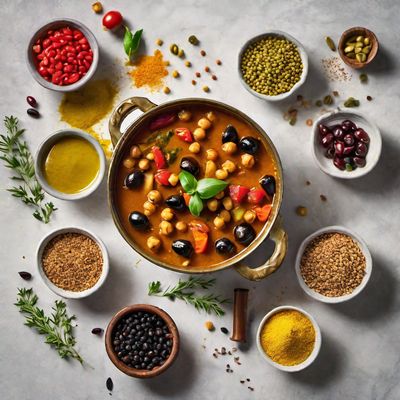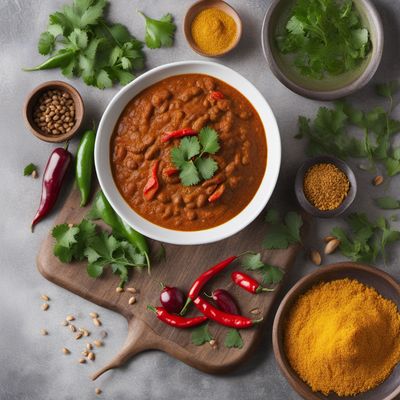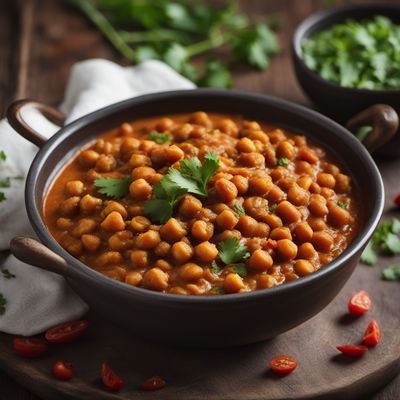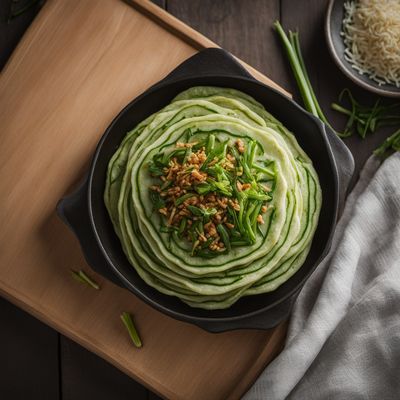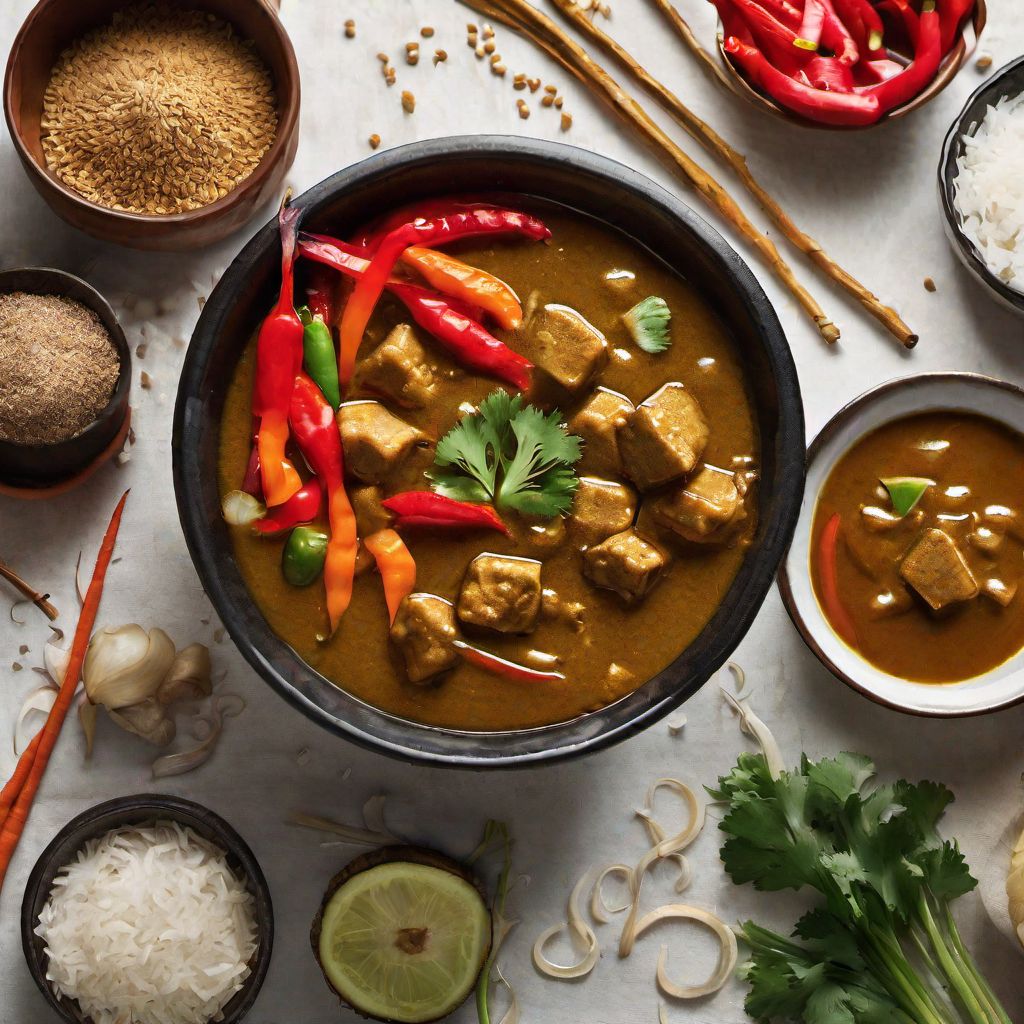
Recipe
Korean-style Curry
K-Curry: A Fusion of Korean and Indian Flavors
4.7 out of 5
In Korean cuisine, bold flavors and vibrant spices are celebrated. This Korean-style Curry combines the rich and aromatic Indian curry with the unique ingredients and techniques of Korean cooking. The result is a harmonious blend of flavors that will tantalize your taste buds and introduce you to a new world of culinary delight.
Metadata
Preparation time
20 minutes
Cooking time
30 minutes
Total time
50 minutes
Yields
4 servings
Preparation difficulty
Easy
Suitable for
Gluten-free, Dairy-free, Nut-free, Low-carb, Paleo-friendly
Allergens
N/A
Not suitable for
Vegan, Vegetarian, Keto, High-protein, Low-fat
Ingredients
While the Indian curry is known for its use of spices like turmeric, cumin, and coriander, Korean cuisine relies on ingredients like gochujang (fermented chili paste), soy sauce, and sesame oil for its distinct flavors. This adaptation of curry incorporates these Korean elements, creating a fusion dish that showcases the best of both cuisines. We alse have the original recipe for Curry, so you can check it out.
-
2 tablespoons (30ml) vegetable oil 2 tablespoons (30ml) vegetable oil
-
1 onion, thinly sliced 1 onion, thinly sliced
-
3 cloves of garlic, minced 3 cloves of garlic, minced
-
1 tablespoon (15g) ginger, grated 1 tablespoon (15g) ginger, grated
-
2 tablespoons (30g) gochujang (Korean chili paste) 2 tablespoons (30g) gochujang (Korean chili paste)
-
1 tablespoon (15ml) soy sauce 1 tablespoon (15ml) soy sauce
-
1 tablespoon (15ml) sesame oil 1 tablespoon (15ml) sesame oil
-
1 tablespoon (15g) curry powder 1 tablespoon (15g) curry powder
-
1 teaspoon (5g) sugar 1 teaspoon (5g) sugar
-
1 cup (240ml) coconut milk 1 cup (240ml) coconut milk
-
2 cups (470ml) chicken or vegetable broth 2 cups (470ml) chicken or vegetable broth
-
2 carrots, sliced 2 carrots, sliced
-
2 potatoes, diced 2 potatoes, diced
-
1 red bell pepper, sliced 1 red bell pepper, sliced
-
1 cup (150g) frozen peas 1 cup (150g) frozen peas
-
500g chicken or beef, thinly sliced 500g chicken or beef, thinly sliced
-
Salt and pepper to taste Salt and pepper to taste
Nutrition
- Calories (kcal / KJ): 450 kcal / 1884 KJ
- Fat (total, saturated): 25g, 10g
- Carbohydrates (total, sugars): 30g, 8g
- Protein: 30g
- Fiber: 6g
- Salt: 2g
Preparation
-
1.Heat the vegetable oil in a large pot over medium heat. Add the sliced onion and cook until softened.
-
2.Add the minced garlic and grated ginger to the pot and cook for another minute.
-
3.In a small bowl, mix together the gochujang, soy sauce, sesame oil, curry powder, and sugar. Add this mixture to the pot and stir well to combine.
-
4.Pour in the coconut milk and chicken or vegetable broth. Stir until the curry paste is fully dissolved.
-
5.Add the sliced carrots, diced potatoes, and red bell pepper to the pot. Bring the mixture to a boil, then reduce the heat and simmer for about 15 minutes, or until the vegetables are tender.
-
6.Stir in the frozen peas and sliced chicken or beef. Cook for an additional 5-7 minutes, or until the meat is cooked through.
-
7.Season with salt and pepper to taste.
-
8.Serve the Korean-style curry hot with steamed rice or noodles.
Treat your ingredients with care...
- Gochujang — Gochujang is a key ingredient in Korean cuisine and adds a spicy and slightly sweet flavor to the curry. Adjust the amount according to your spice preference.
- Sesame oil — Use toasted sesame oil for a more intense nutty flavor.
- Curry powder — Choose a mild or medium curry powder to balance the flavors of the Korean and Indian spices.
Tips & Tricks
- For a vegetarian version, replace the chicken or beef with tofu or tempeh.
- Add a splash of lime juice or vinegar for a tangy twist.
- Garnish with chopped green onions and toasted sesame seeds for extra flavor and texture.
- Adjust the spiciness by adding more or less gochujang.
- Make a larger batch and freeze the leftovers for quick and easy meals.
Serving advice
Serve the Korean-style curry with steamed rice or noodles. Garnish with fresh cilantro or basil leaves for a pop of color and freshness.
Presentation advice
Serve the curry in individual bowls, allowing the vibrant colors of the vegetables to shine through. Place a small dish of gochujang on the side for those who want an extra kick of spice.
More recipes...
For Curry » Browse all
For Indian cuisine » Browse all
More Indian cuisine dishes » Browse all

Rogan josh
Rogan josh is a traditional Kashmiri dish made with lamb, yogurt, and a variety of spices. It is a flavorful and aromatic dish that is perfect for...

Rajma
Kidney Bean Curry
Rajma is a popular vegetarian dish from the Indian subcontinent.

Mirchi ka salan
Mirchi ka salan is a traditional Indian dish that is made with green chilies and peanuts. The dish is spicy, tangy, and perfect for adding flavor...
More Korean cuisine dishes » Browse all

Yeot
Yeot is a traditional Korean candy that is sweet, chewy, and made with rice.

Tteok
Tteok is a Korean dish made from rice flour. It is often served as a dessert or snack food.

Sangchu ssam
Sangchu ssam is a Korean dish that is made with lettuce leaves and a variety of fillings. It is a healthy and refreshing dish that is perfect for...
